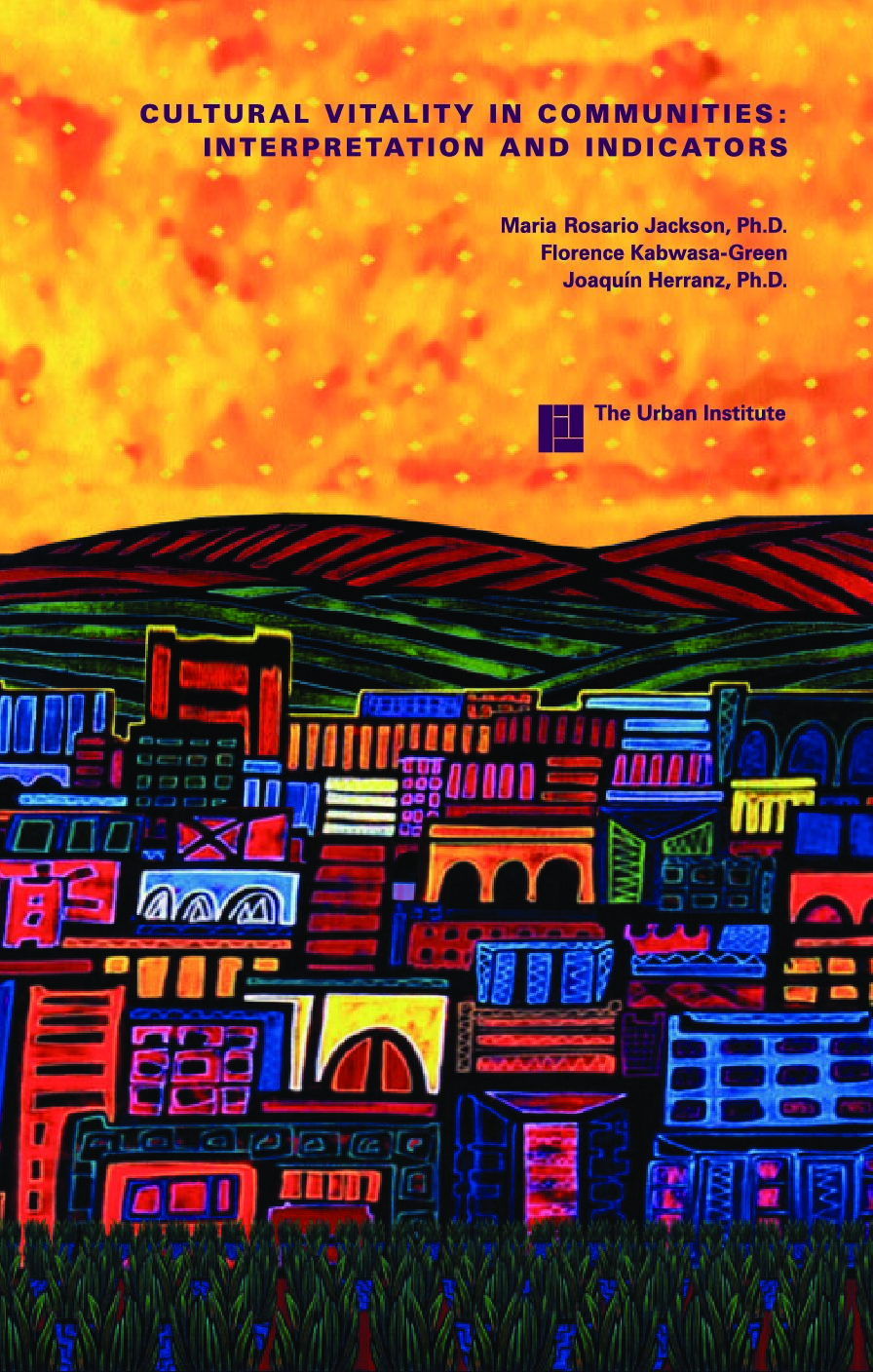-
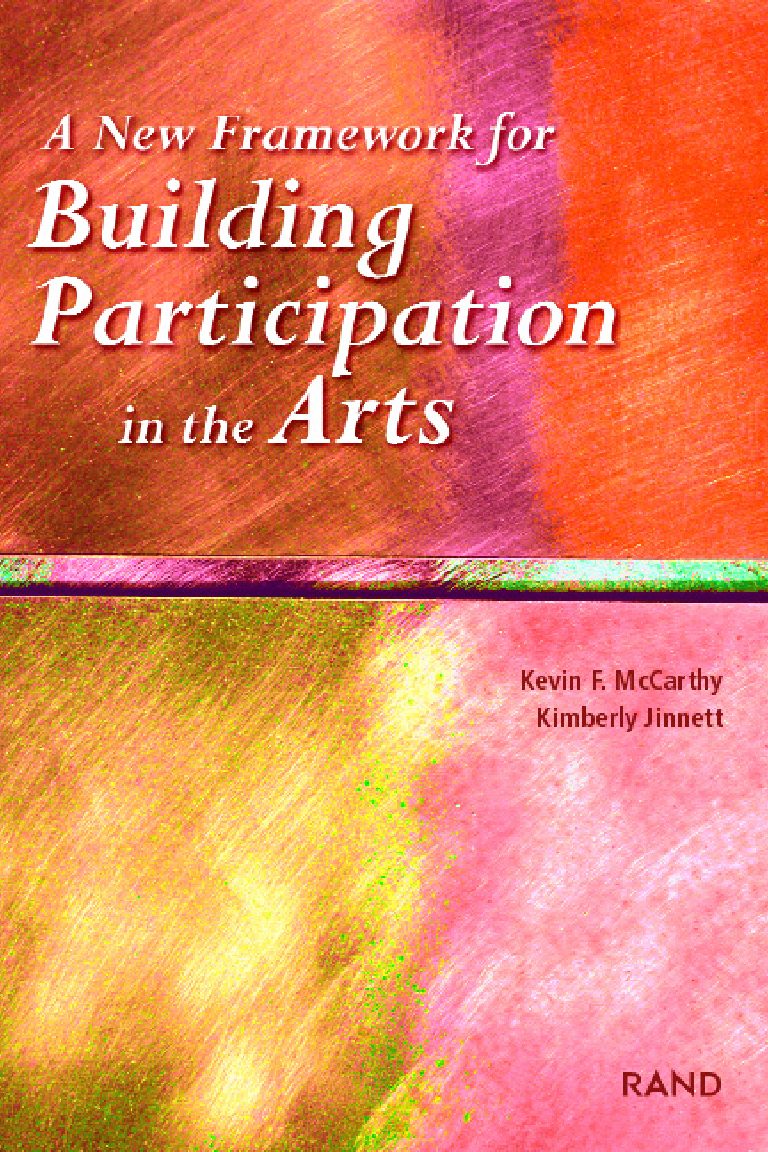
A new framework for building participation in the arts – 606KB
Arts organizations across the country are actively expanding their efforts to increase public participation in their programs. This report presents the findings of a RAND study sponsored by the Wallace-Reader’s Digest Funds that looks at the process by which individuals become involved in the arts and attempts to identify ways in which arts institutions can most effectively influence this process. The report presents a behavioural model that identifies the main factors influencing individual decisions about the arts, based on site visits to institutions that have been particularly successful in attracting participants to their programs and in-depth interviews with the directors of more than 100 institutions that have received grants from the Wallace-Reader’s Digest Funds and the Knight Foundation to encourage greater involvement in the arts.
-
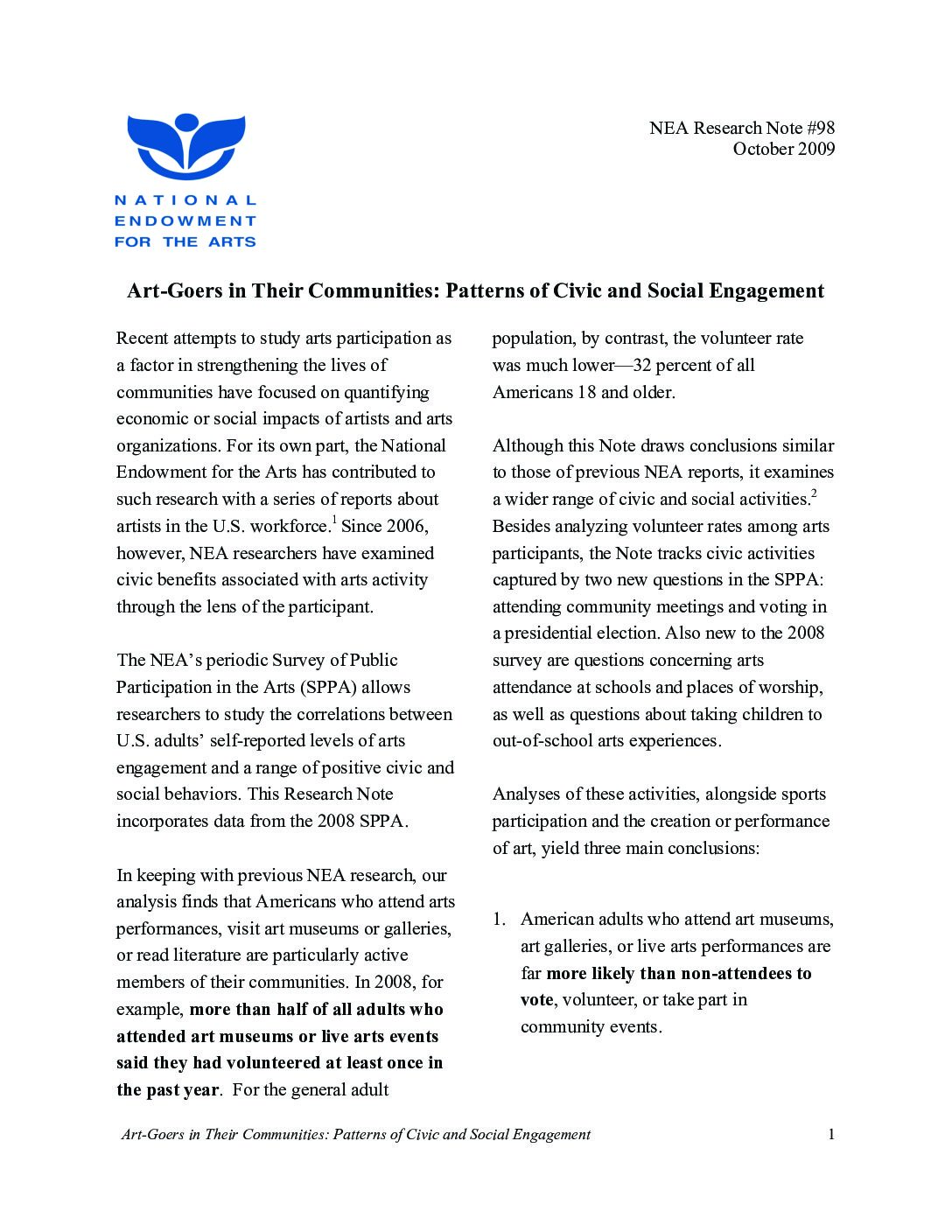
Art-Goers in Their Communities: Patterns of Civic and Social Engagement – 277KB (2009)
Recent attempts to study arts participation as a factor in strengthening the lives of communities have focused on quantifying economic or social impacts of artists and arts organizations. For its own part, the National Endowment for the Arts has contributed to such research with a series of reports about artists in the U.S. workforce.1 Since 2006, however, NEA researchers have examined civic benefits associated with arts activity through the lens of the participant.
-
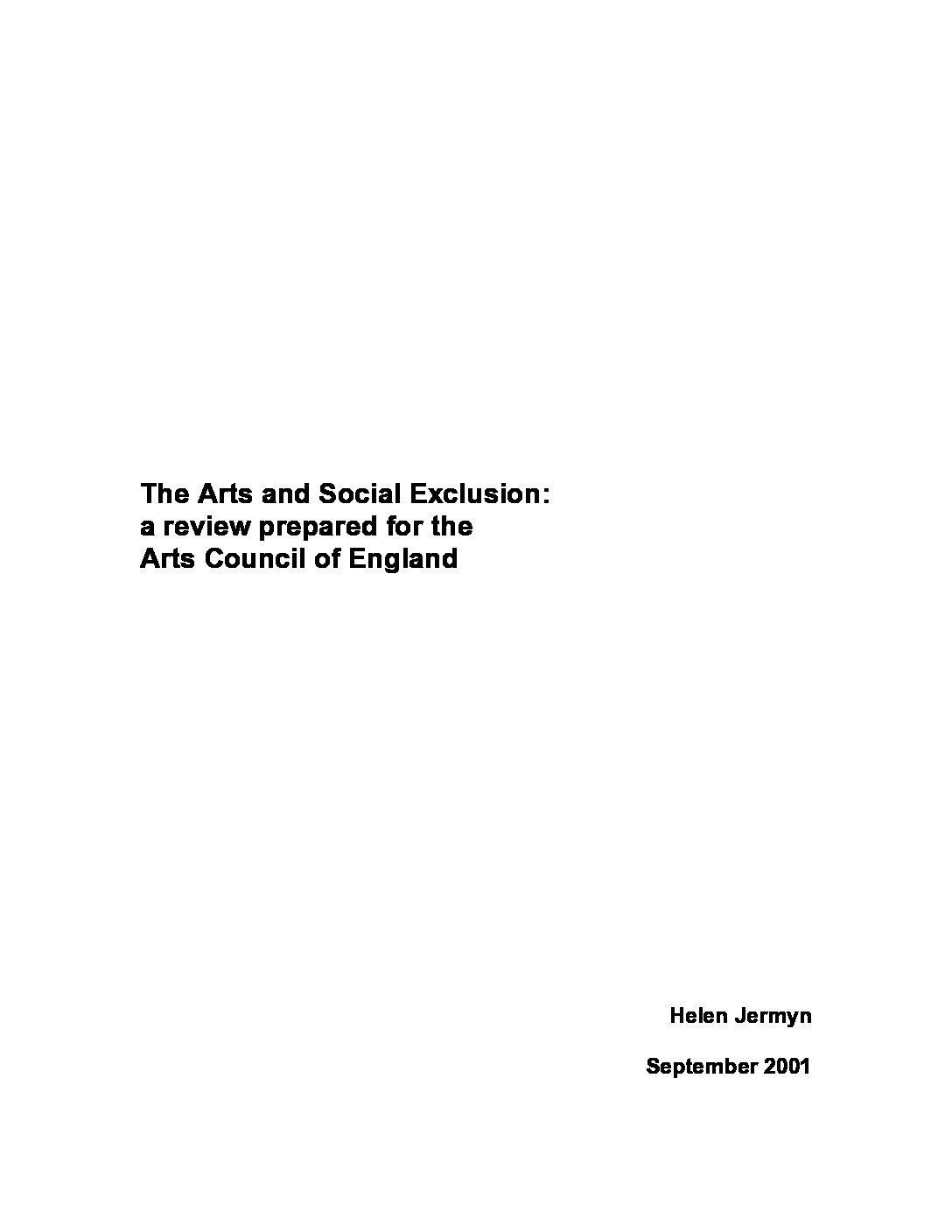
Arts and Social Exclusion – 539KB
A literature review commissioned by the Arts Council of England to support its two-year social inclusion research programme. The review explores the concept of social exclusion, and evidence of the impact of the arts in contributing to addressing social exclusion.
-

Arts Participation: steps to stronger cultural and community life – 2481KB
Summary of findings that people who participate in the arts are more likely to engage in other community activities. A brief focusing on How Arts Participation Contributes to Arts & Community; Four Ways to Participate in Arts & Culture; Arts Participation & Levels of Personal Commitment; and, Arts Participation & Community Participation.
-
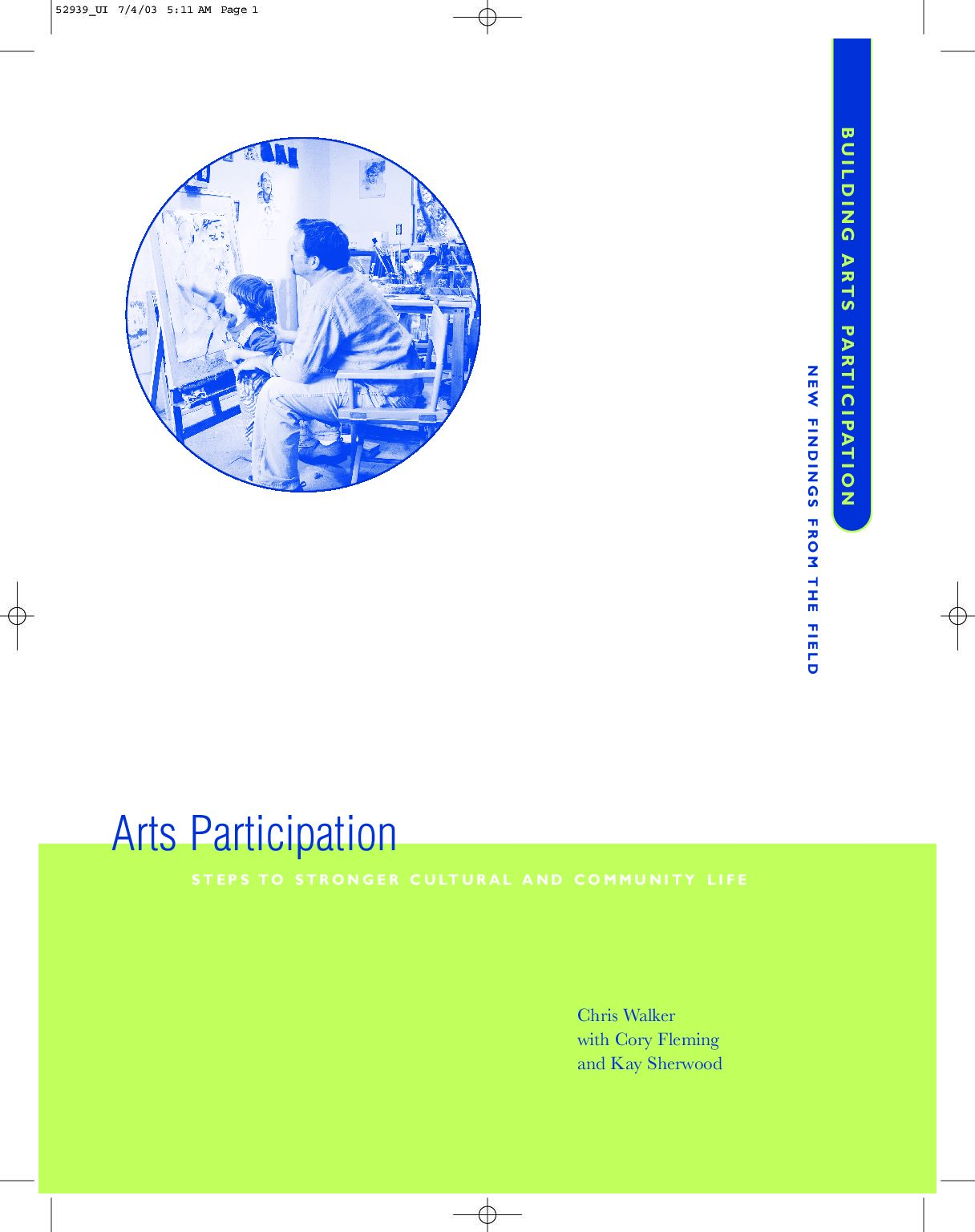
Arts Participation: Steps to Stronger Cultural and Community Life – 2481KB (2003)
A brief focusing on How Arts Participation Contributes to Arts & Community; Four Ways to Participate in Arts & Culture; Arts Participation & Levels of Personal Commitment; and, Arts Participation & Community Participation.
-
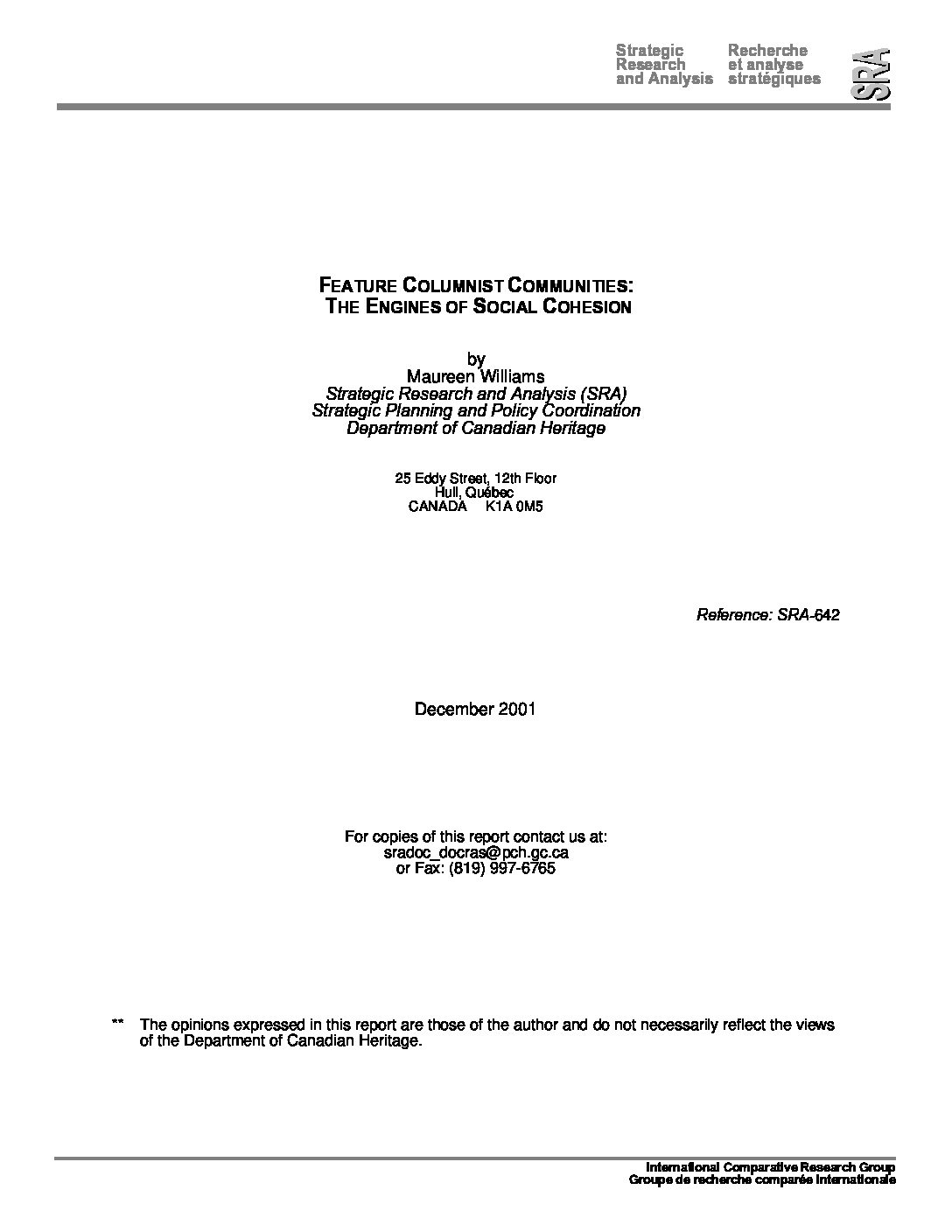
Communities: the engines of social cohesion – 171KB (2001)
Summary of current directions and understandings in social cohesion research.
-
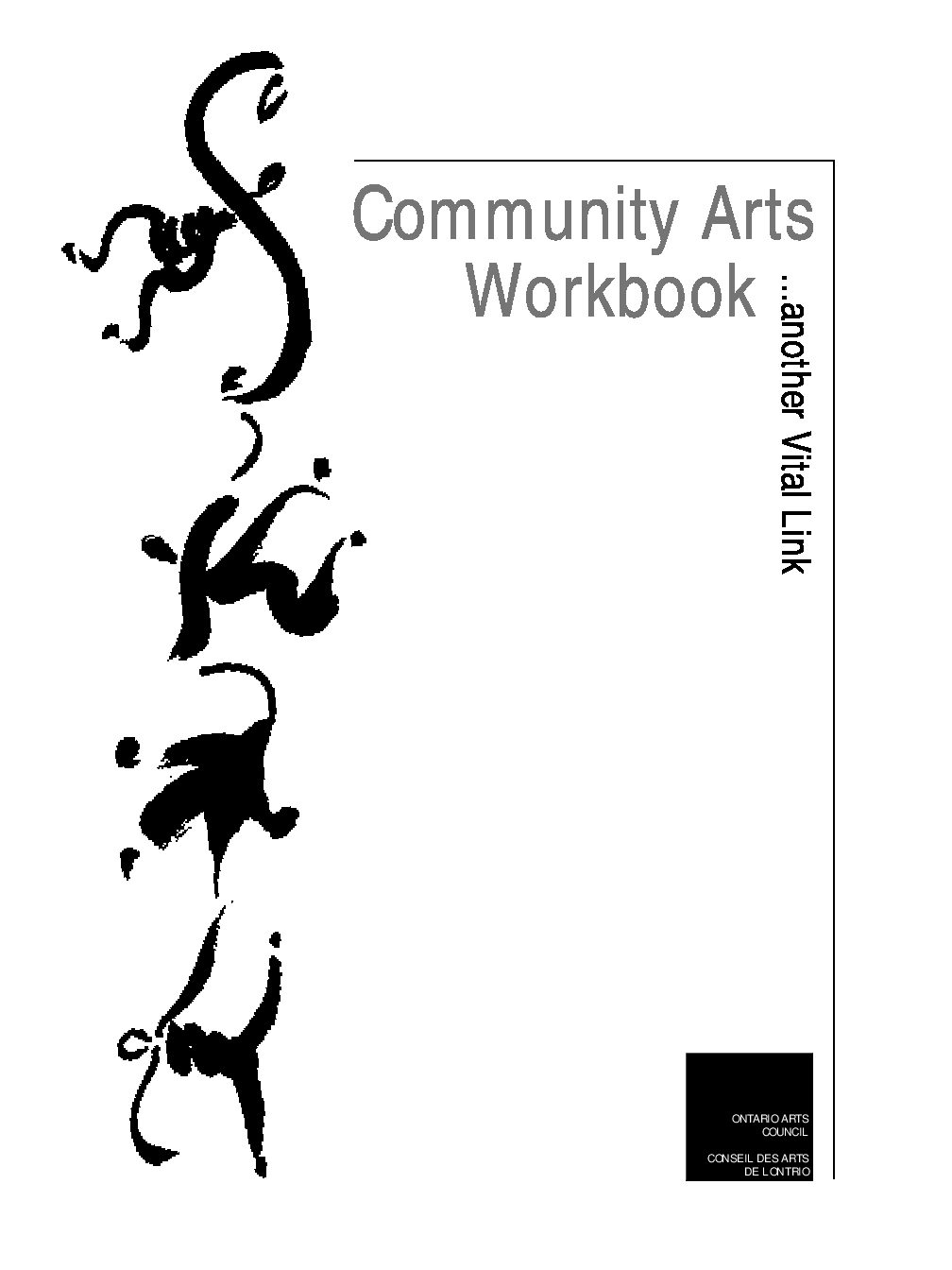
Community Arts Workbook … another Vital Link – 2666KB
What is community arts? How can we view it as an artistic discipline? How has community arts emerged in Canada and in other countries? How does one start a community arts project? What are some of the challenges to working in this creative collaborative process?
-
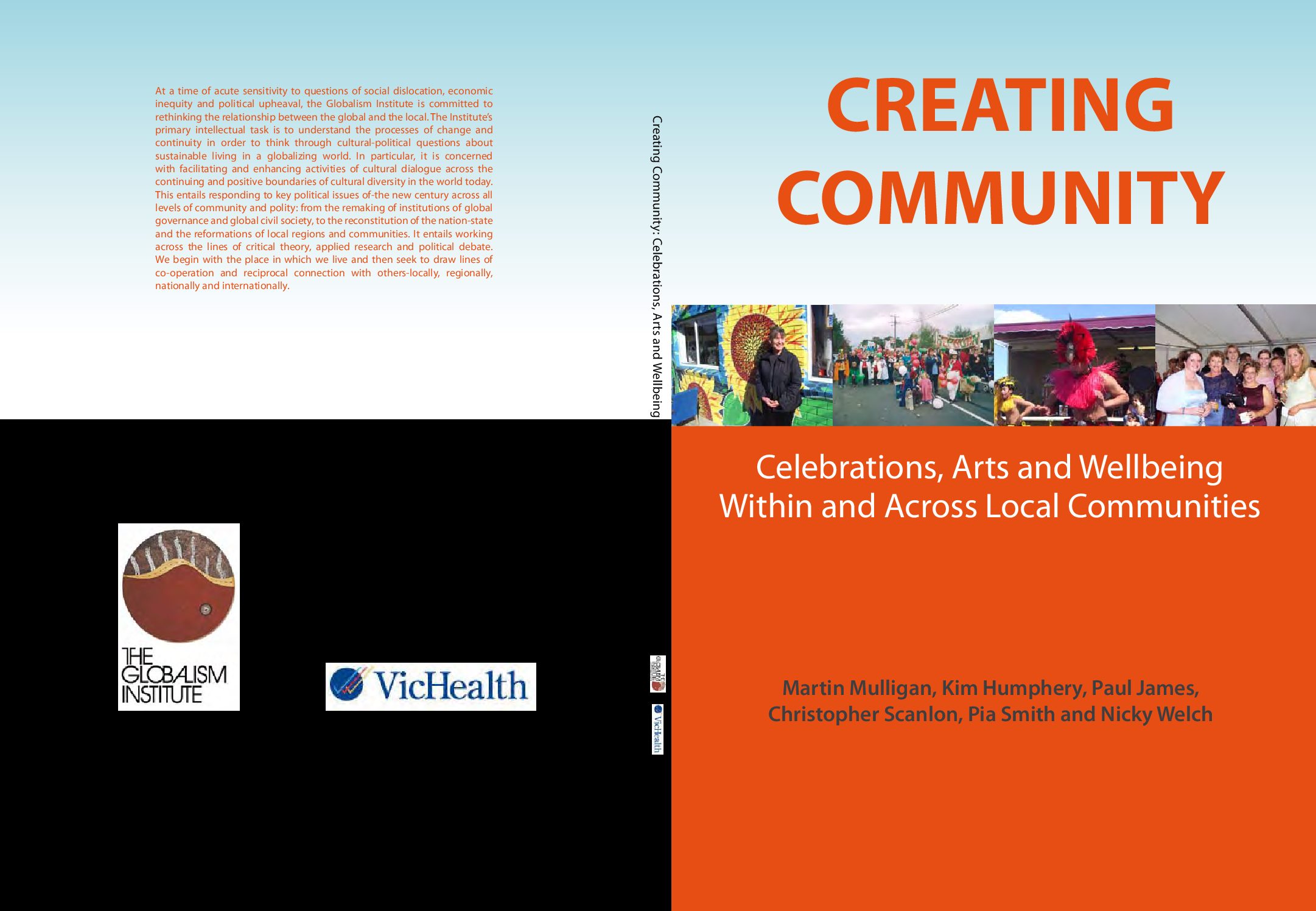
Creating Community: Celebrations, Arts and Wellbeing Within and Across Local Communities – 1076KB (2006)
The arts and other forms of creativity can have diffuse and quite profound social outcomes in the contemporary world. They can generate a deeper sense of place that contextualizes a local sense of community.
In some cases, locally relevant projects are also able to address broader social concerns beyond local belonging or identity, such as the integration of migrants, impacts of gentrification, the restructuring of rural economies, or a fear of constant change and insecurity.
-
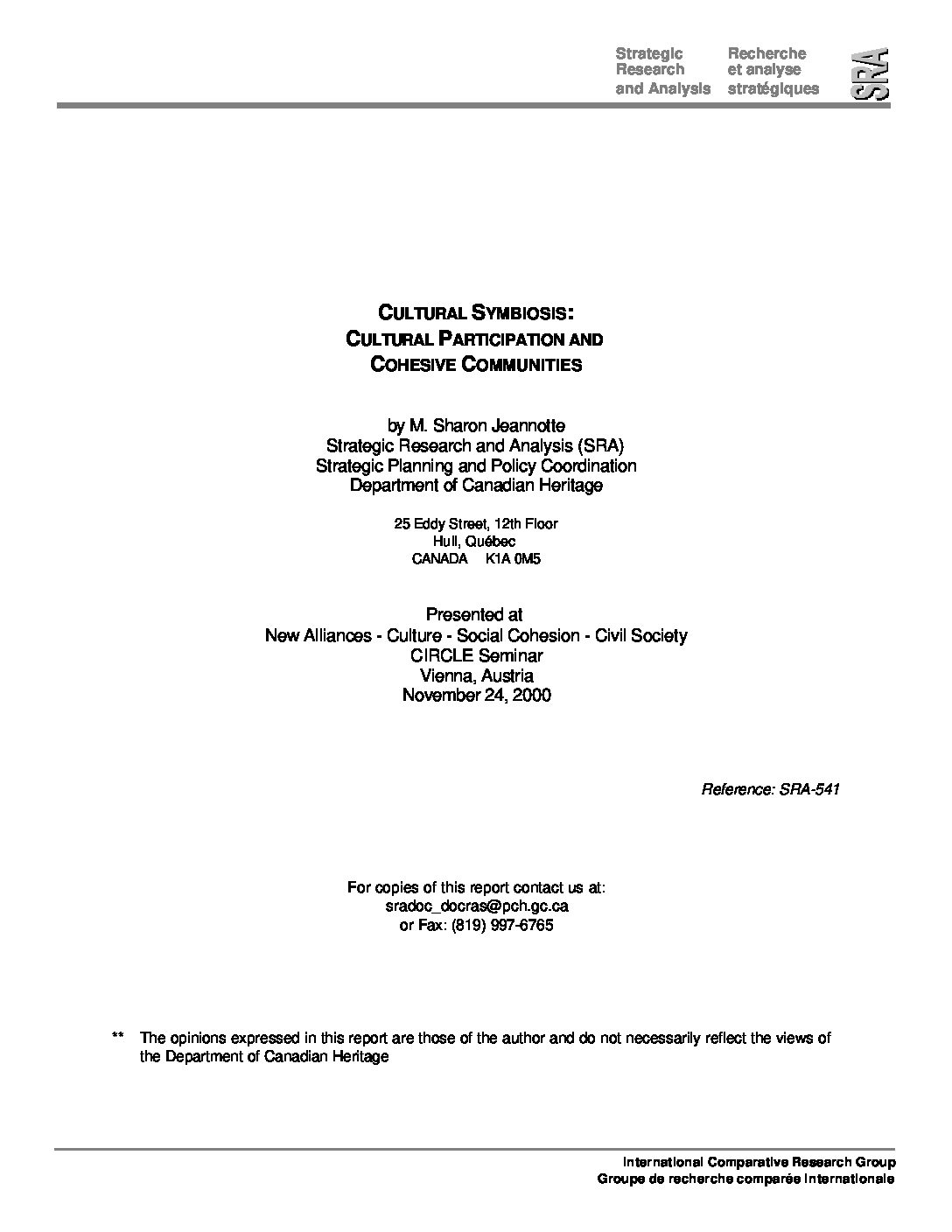
Cultural Symbiosis: cultural participation and cohesive communities – 67KB (2000)
Research in cultural participation rates and effects on civic participation and community development.
-
Cultural Vitality in Communities: Interpretation and Indicators – 4775KB (2006)
This monograph, part of a series presenting the work of the Urban Institute’s Arts and Culture Indicators Project (ACIP), discusses three major advances in our ongoing work. First, we introduce a definition of cultural vitality that includes the range of cultural assets and activity people around the country register as
significant.Specifically, we define cultural vitality as evidence of creating, disseminating, validating, and supporting arts and culture as a dimension of everyday life in communities.
Second, we use this definition as a lens through which to clarify our understanding of the data necessary, as well as the more limited data currently available, to document adequately and
include arts and culture in more general quality of life indicators. Third, we develop and recommend an initial set of arts and culture indicators derived from nationally available data, and we
compare selected metropolitan statistical areas based on the measures we have developed. -
Enderby, BC –- Enderby and District Community Play Project – 110KB (2002)
Desired outcomes, challenges and lessons learned.
A project report presented by Cathy Stubington at the Inaugural Creative City Network
Conference, November 2002.This project was a collaboration between Enderby and District Resource Centre Society and the artist /writer Cathy Stubington. The steering committee spearheaded a year and a half’s worth of community arts and fundraising activities to interest residents in participating in a community play. The play, Not the Way I Heard It, was presented ten times in the last two weeks of May 1999 on the banks of Shuswap River in Enderby. Local actors, musicians, visual artists, and seamstresses joined their talents with several theatre professionals from outside the community. The number of different people involved was estimated at 800.
-
Engaging Audiences – 1620KB (2009)
A report on audience engagement for arts organizations as they face the oncoming issues of new technologies and demographic trends that facilitate new modes of artistic engagement outside of traditional arts institutions.

